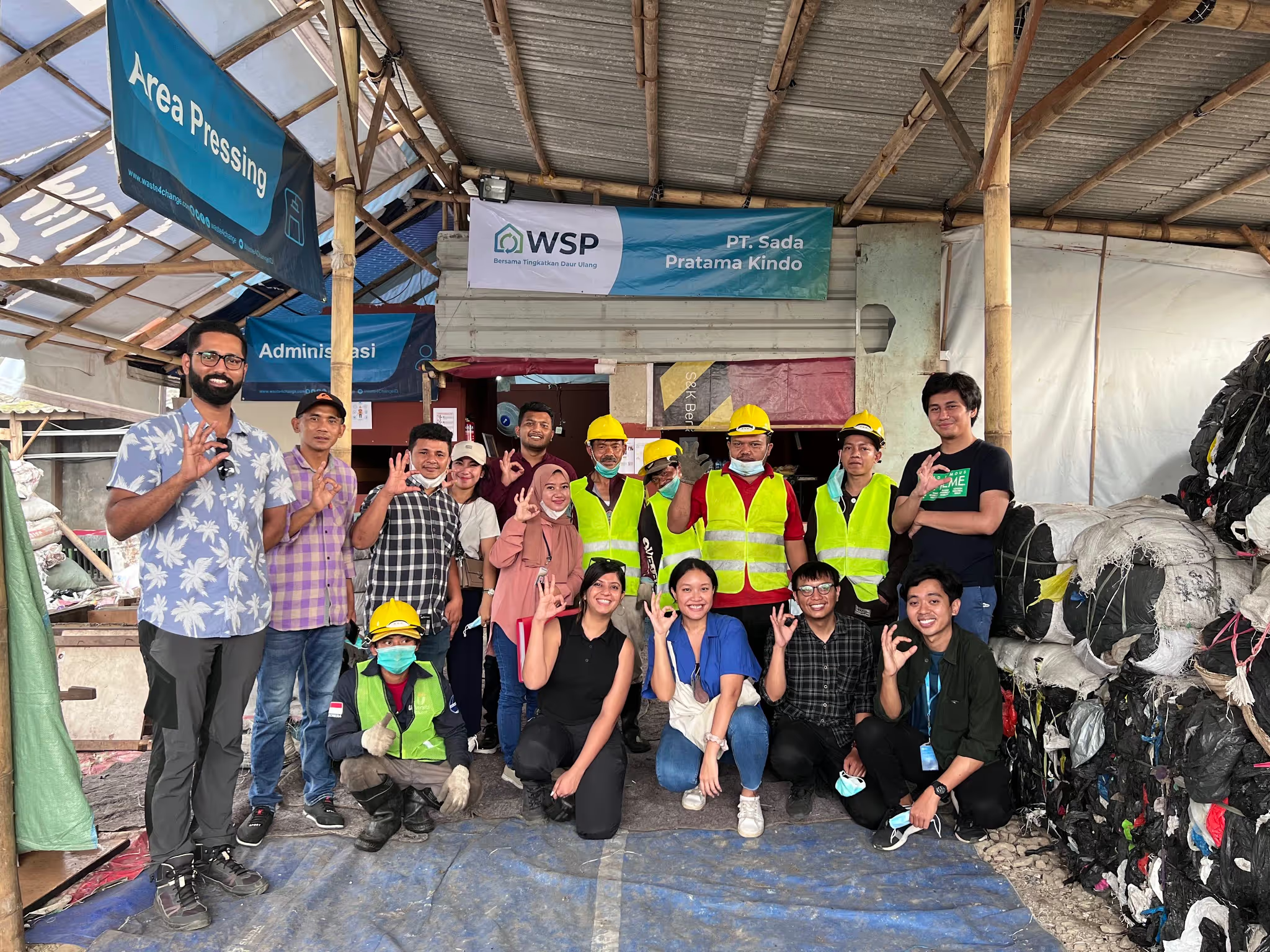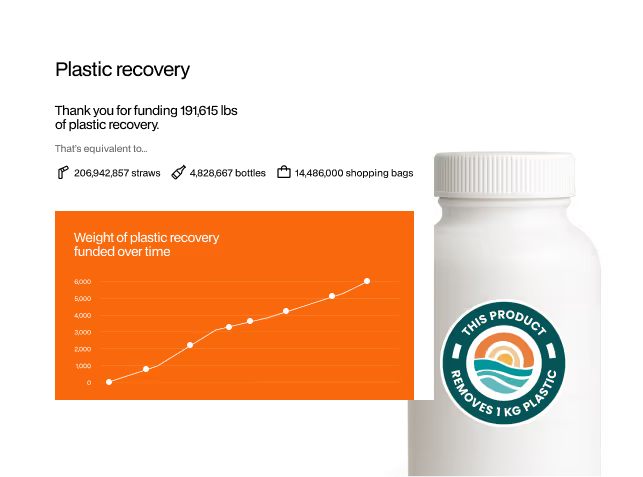Plastic pollution is one of the most pressing environmental issues today. Over 400 million metric tons of plastic waste is generated every year, and the majority is grossly mismanaged. Almost 80% of plastic products end up accumulating in landfills or the environment, while 12% are incinerated.
Developing countries often lack sufficient infrastructure to responsibly manage plastic waste, and many developed countries continue to have low recycling rates – struggling to properly collect and manage the quantity and diversity of discarded plastics generated. The Big Plastic Count survey shed light on the UK's waste system’s failure to cope with the enormous amount of waste generated. The survey was completed by almost a quarter of a million participants, who - between them - threw away 6.4 million pieces of packaging waste in just one week. Yet, only 12% of this plastic was likely to be recycled. Findings such as these prompt us to reflect and ask ourselves if there’s a better way.
It is evident that mismanaged plastic trash has become a global menace and we need a way out. But how can we ensure that plastic waste is properly managed? Let’s find out.
Recycling, reprocessing, and co-processing
At rePurpose Global, we work to eliminate plastic waste from nature. This involves identifying areas of need, and financing plastic waste collection infrastructure across the globe. But our work does not end there - we ensure that the plastic collected in our projects is diverted to the most environmentally-appropriate end-of-life destinations available. As you read on, you will find that we recycle everything that can be recycled, so the plastic we collect goes on to have another life, in one form or another.
In fact, rePurpose Global’s Plastic Credit Protocol includes a hierarchy of end destinations for collected plastic, and outlines our preferred outcomes (mechanical recycling, reprocessing, co-processing) as well as ineligible end of life options (see image below).
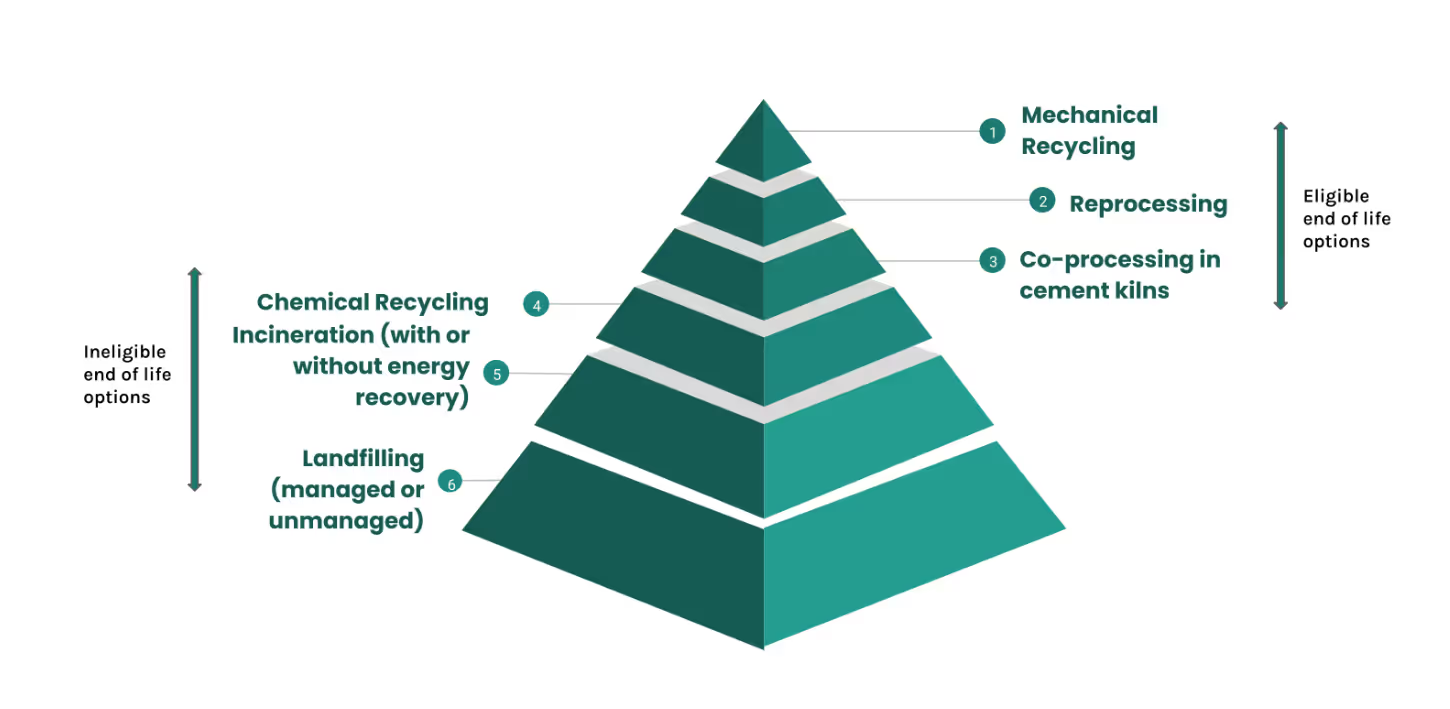
Here’s an introduction to the environmentally-best end destinations for plastics in this hierarchy, and where these are used.
Mechanical recycling
Mechanical recycling is the preferred end destination for discarded plastic. Mechanical recycling refers to operations that recover plastics via mechanical processes like grinding, washing, separating, drying, re-granulating and compounding. After the plastic feedstock is mechanically treated, it produces recyclates that can be used instead of virgin plastics to produce new plastic products. When people think about “recycling” plastic, this is what they – most likely – have in mind.
The environmental impact of using recycled plastic content (known as Post Consumer Resin, or PCR) is far less than using virgin plastic. Plastics being collected and recycled is clearly preferable to them ending up in landfill or littered in nature. By creating a secondary market for plastic, building mechanical recycling capacity helps to ensure that plastics have value, which incentivises collection and diversions from the waste stream. Across rePurpose Global’s impact projects, we ensure that all plastics that can be recycled, are recycled.
There are also potential carbon emissions benefits. Though the overall CO2 used in the production of recycled plastic can differ based on different polymer types, a study conducted at Imperial College London suggests that recycling plastics saves between 30% and 80% of the carbon emissions that virgin plastic processing and manufacturing generate. Another independent study shows that it takes 0.45 kg of CO2 to produce one kilogram of rPET (recycled polyethylene terephthalate), whereas the production of virgin PET or new material accounts for a CO2 equivalent of 2.15 kg per kilogram, suggesting that it takes 4-5 times less CO2 to produce one kg of recycled PET than virgin PET.
With the implementation of regulations such as the UK Plastic Packaging Tax and growing business preference for sustainable alternatives, the demand for recycled plastic or PCR is set to increase – and with it, drive the circular economy forward. Recycling is not just our preferred mode of plastic management, but the basis for a circular economy for plastics.
Reprocessing

Reprocessing is the method of transforming plastic from a waste product into something that can be used in another form. This treatment process increases the useful lifespan of a piece of plastic.
Unlike PET and other plastics where there is an established recycling infrastructure; thin, flexible, and multi-layer plastics (think chip packets, toffee wrappers, protective food wraps) do not. This means there is no value in collecting these plastics, and they invariably end up being landfilled, burned, or just littered.
rePurpose Global’s financing incentivizes our impact partners to collect these low-value plastics that cannot be mechanically recycled from nature. These materials can be reprocessed to make construction materials and commodities with commercial value. At our Sueño Azul impact project in Bogota, Colombia, our impact partner compresses plastics to make eco-wood. This plastic 'wood' is used to make benches, park utilities, and affordable housing units for informal waste workers.
Through reprocessing, our projects give a new life to these plastics and stop them from becoming plastic pollution.
Co-processing
Co-processing recovers both energy and mineral content from unrecyclable plastic in a controlled environment. It is recognized by the United Nations Basel Convention as the environmentally preferred end destination for low-value plastic waste in many geographies. While it is the best option available, it is not a long term solution, and work must continue to reduce the use of multi-layer low-value plastics.
Co-processing is not the same as incineration of waste-to-energy (WtE), as not only is energy produced but the residual mineral content can be incorporated into cement or used in road construction. This substitution reduces the reliance and use of conventional fossil fuels and raw materials (such as coal), which reduces greenhouse gas emissions.
The lowest value plastics – plastics that cannot be mechanically recycled or reprocessed – are co=processed as part of cement production. Without our intervention these materials have no market value: even the cost of transporting them to co-processing facilities can be inhibitive, meaning plastics are likely to be dumped or openly burnt.
Burning and landfilling
At rePurpose Global, we avoid burning or landfilling plastic as a matter of policy. While other plastic solutions providers incorporate landfilling and burning waste as a management strategy, we believe ethical end destinations can be achieved without these environmentally destructive practices.
The paragraphs below illustrate the negative environmental outcomes of these practices, and provide context for why we strive for more value-based solutions.
Burning
According to the U.S. Environmental Protection Agency, burning plastics is the worst possible end-of-life management approach from a climate perspective. It avoids plastic leaking into nature, but produces black carbon (soot), as well as other toxic outputs and gasses: BPCs, dioxins, mercury, and furans. These are linked with various environmental and human health concerns. It is worth noting that this is different from co-processing where the formation of dioxins and furans is avoided due to high temperatures and retention times in kilns.
Landfilling
Though well-managed landfills may not be contributing significantly to plastic leaking into nature, plastics take hundreds of years to break down in a landfill. Plastic bottles take an average of 450 years to decompose, and plastic straws can take up to 200 years. Landfilled plastics can also emit dangerous methane and carbon dioxide, and release toxic leachates as they break down. As well as greenhouse gas implications, methane can catch fire if allowed to build up in concentration. In the image below, taken at an unplanned dumpsite in Cheruvannur, India, a spontaneous landfill fire has melted the metal structures in the background.
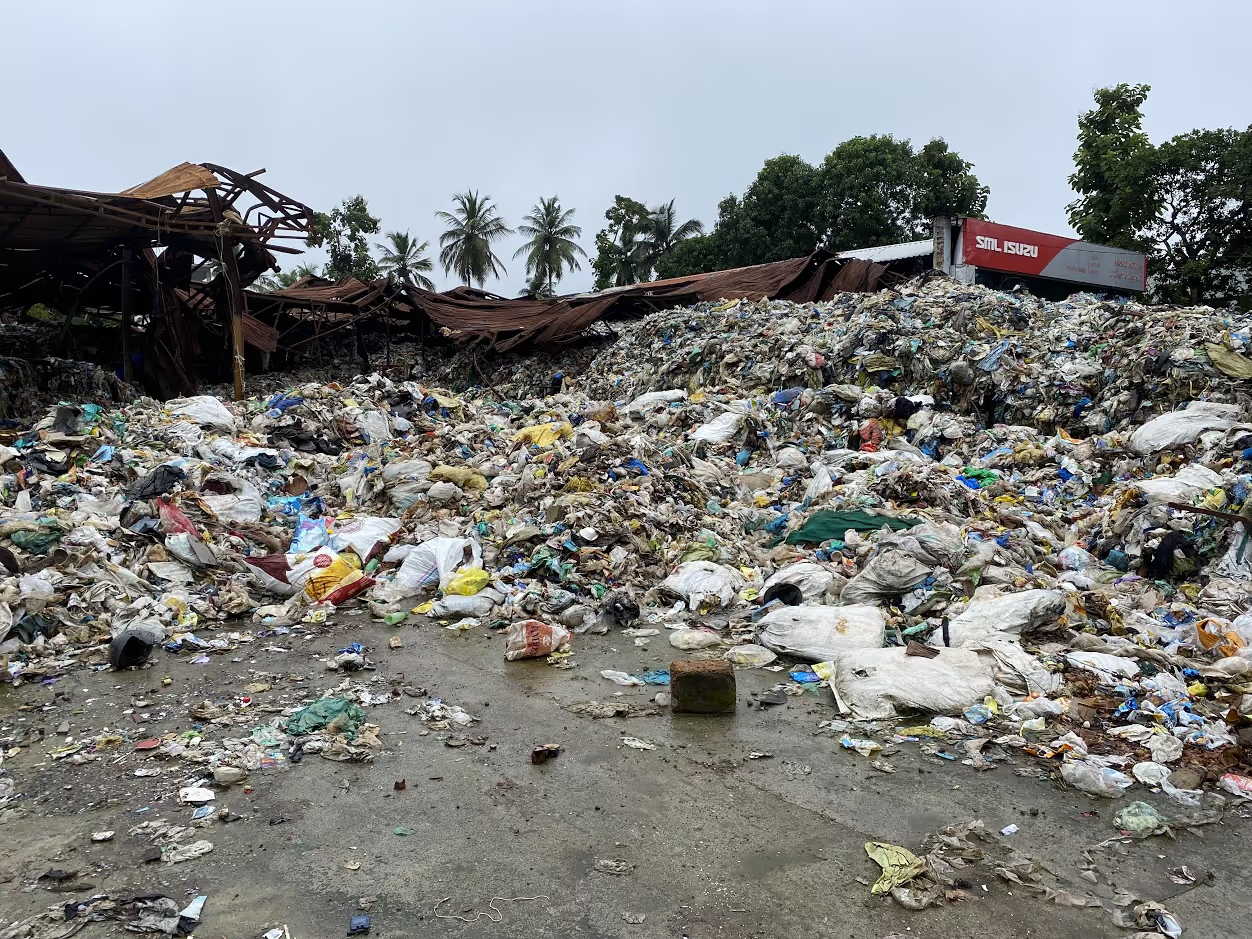
Final Thoughts
Supporting a circular economy for plastics and creating the conditions needed for ‘reduce, reuse, and recycle’ is one of the most effective ways of tackling plastic pollution. Brands that rely on plastic in their supply chains should endeavor to reduce plastic use as much as possible, and reuse plastic already in circulation.
In places where reduction and reuse are not possible, plastic waste can be managed effectively by sending it to the best environmental end destinations. By creating financial structures that incentivize the management of plastic waste to the highest environmental standards, rePurpose Global and our partner brands are taking a big step in the right direction.
rePurpose Global is the world’s largest plastic action platform. Get in touch with us here to see how we can work with you on your plastic footprint. Let’s give plastic a new life.

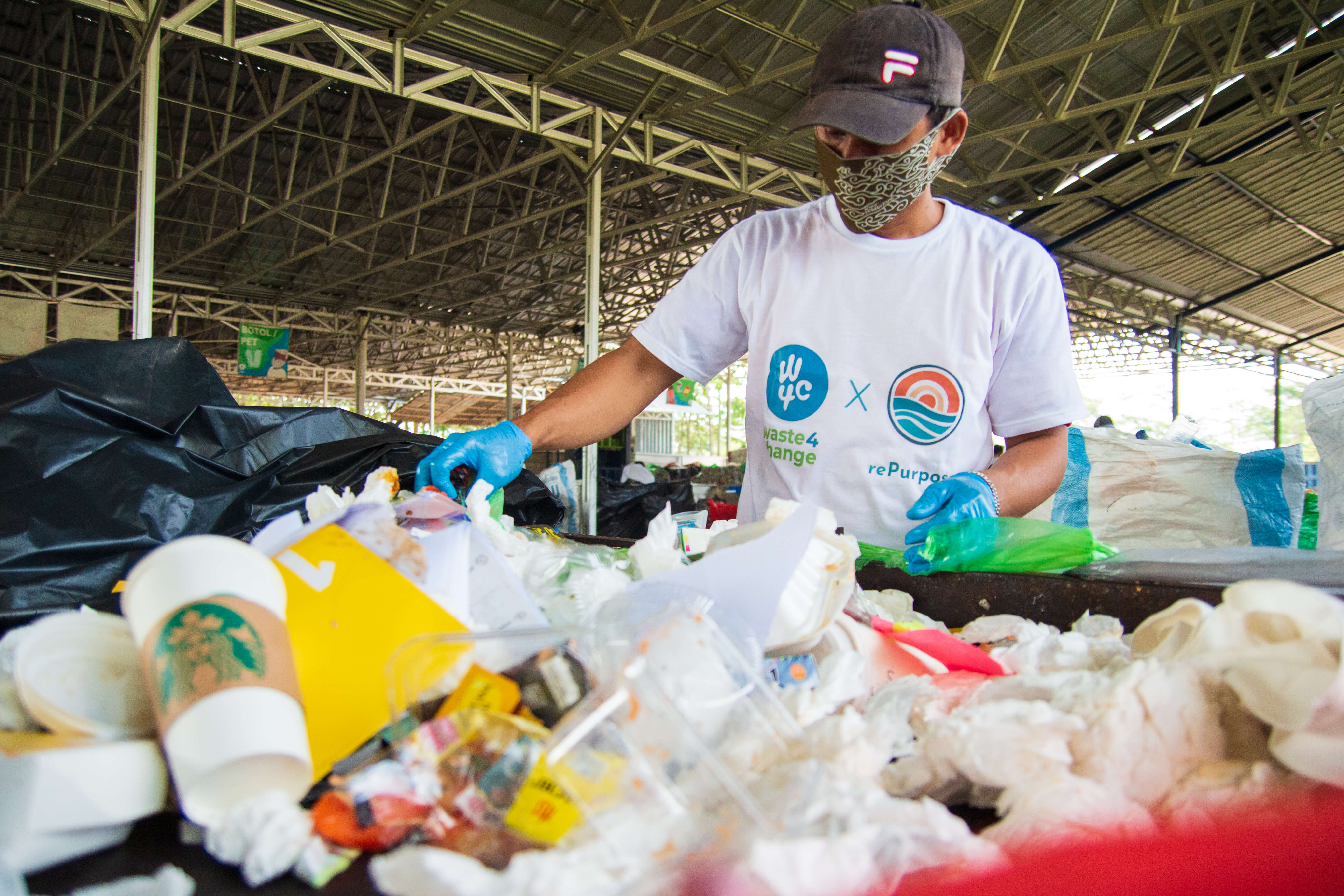
.avif)
.avif)

